Embarking on a decluttering journey transforms your house into an organized haven in just one day.
Embarking on a one-day decluttering spree can transform your house into an organized oasis.
This article will guide you through a practical, step-by-step process to declutter your entire house in a single day.
From sorting your items, deciding what to keep, and finding efficient storage solutions, to disposing of unwanted items responsibly, every aspect is covered.
With this comprehensive guide, you’ll have everything you need to get your house decluttered and organized quickly and effectively.
So, roll up your sleeves and prepare for a productive day of decluttering.
Understanding the Importance of Decluttering
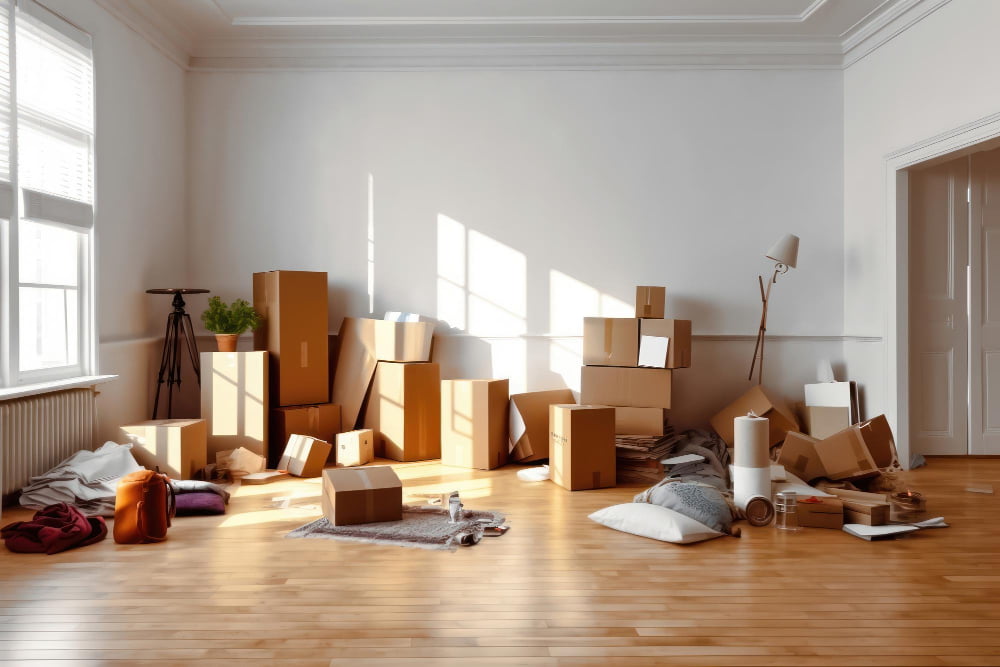
When clutter takes over, it can considerably impact the overall ambiance of a home, straining mental well-being and productivity levels.
An orderly space, free from unnecessary distractions, fosters positivity and calm.
Furthermore, by removing unused items, you allow more room for the things you genuinely need and appreciate, creating a more functional environment.
Also consider the economical benefit of decluttering: items in good condition can be sold for extra cash, donated for a tax deduction, or recycled, reducing waste and contributing to a more sustainable lifestyle.
Why Declutter Your House?

An organized living space significantly contributes to personal productivity and overall well-being. Unnecessary items lying around not only consume physical space but also mental energy, creating a sense of unease and chaos.
Decluttering removes this burden, bringing in clarity by simplifying surroundings. It cultivates a calm and serene ambiance, providing a better focus on essential tasks.
With fewer items to clean and maintain, the time spent on house chores drastically decreases, freeing up more leisure hours. Moreover, simplifying possessions might lead to substantial cost savings by eliminating hasty or impulsive purchases for items already owned, hiding in plain sight.
Lastly, decluttering reduces environmental footprint by promoting conscious consumption and reducing waste. Thus, decluttering stands as a vital factor in enhancing quality of life.
Preparing for a Full Day of Decluttering
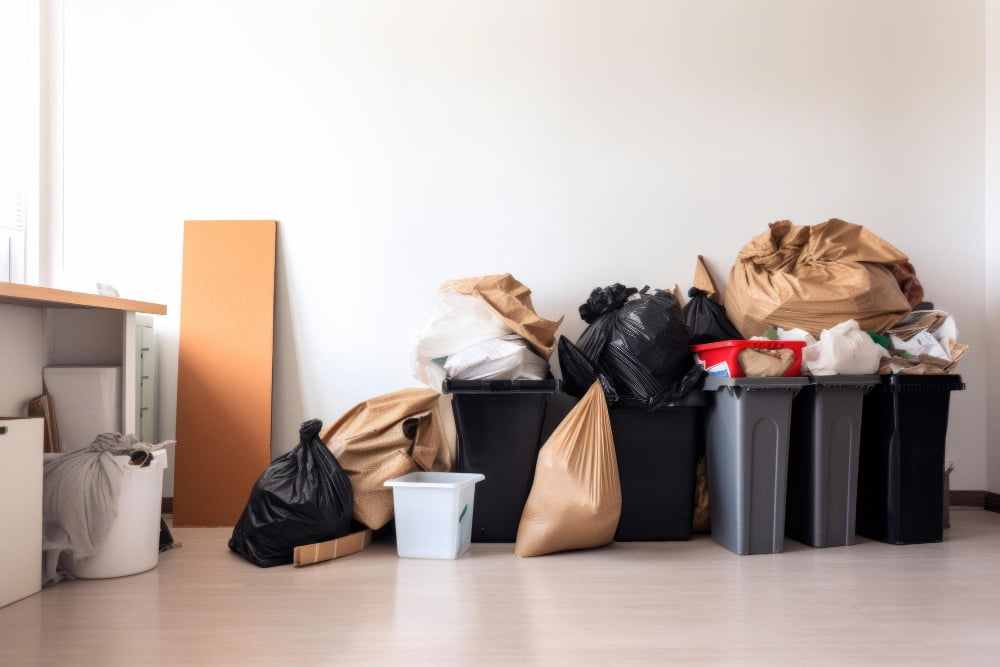
To ensure high productivity, collect all required supplies beforehand. Sturdy trash bags, empty boxes for sorting items, cleaning materials, and protective gloves are must-haves.
Do not forget to prepare refreshments and healthy snacks to keep energy levels up throughout the day.
Familiarize yourself with the local waste and recycling guidelines to dispose of items responsibly.
Getting the Necessary Supplies
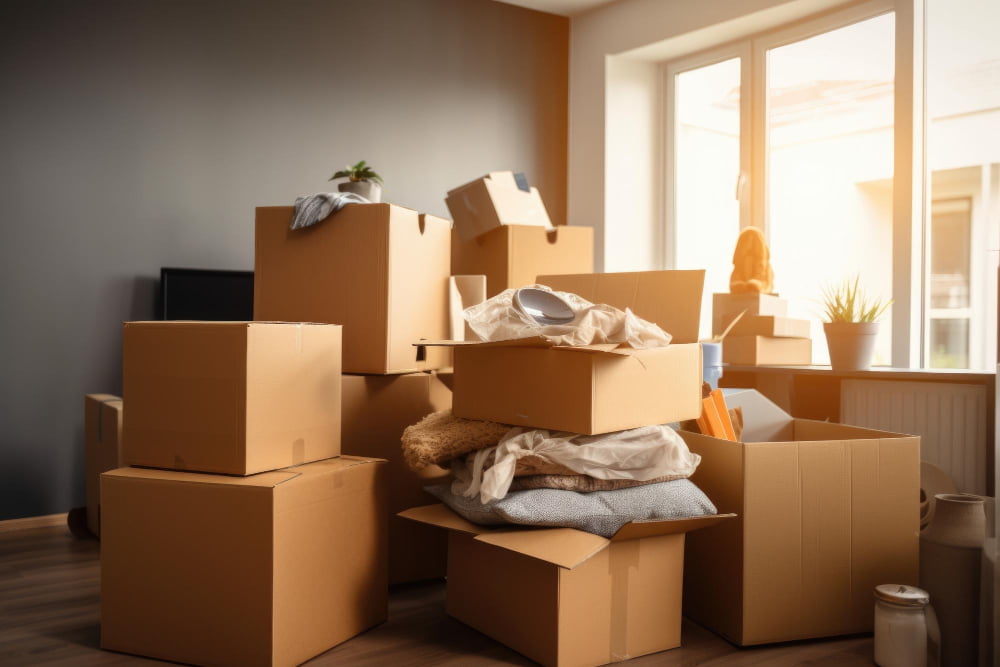
Begin by assembling the needed tools: sturdy boxes, heavy-duty garbage bags, storage bins, and markers for labeling.
These tools are instrumental in sorting out the items you decide to keep, donate, sell, or throw out.
Consider investing in quality organizers such as drawer dividers, shelf expanders, and storage baskets for a smooth organization process after decluttering.
Necessary cleaning supplies, including disinfecting wipes, gloves, and vacuum cleaners, will also ease the task.
Remember, preparing adequately goes a long way in ensuring a seamless decluttering process.
Start With a Whole House Surface Declutter
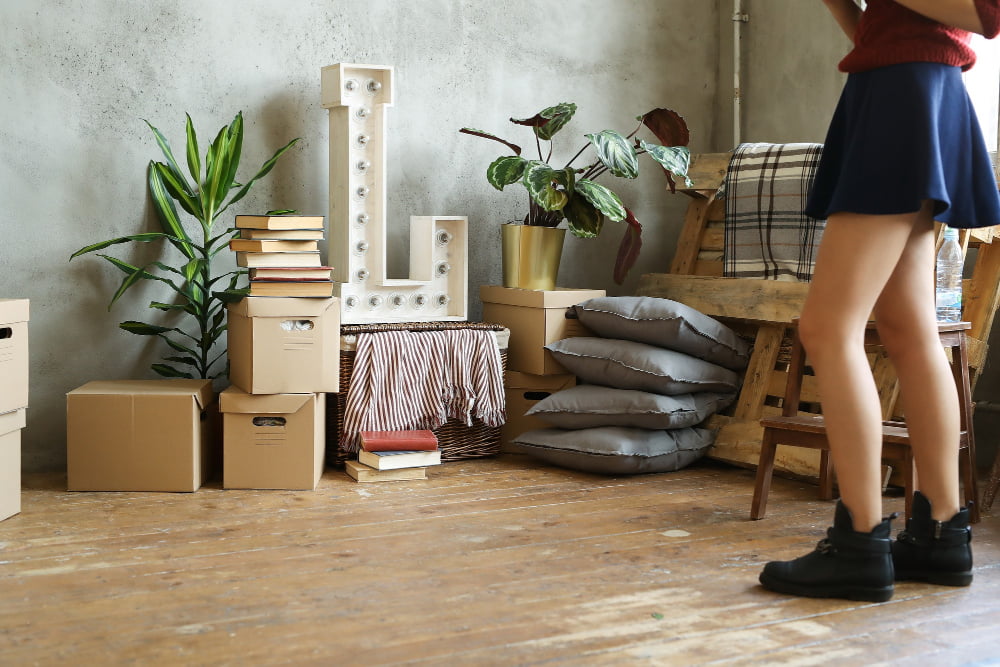
Tackling the clutter on surfaces like floors, tables, and countertops is the first practical step. This is a quick win creating a visible improvement, which can boost your motivation and energy for further tasks.
Think of this phase as skimming off the most apparent chaos. Remove any items that don’t belong to a particular room and set them aside. Do the same for obvious trash such as empty boxes or used paper towels.
By the time you’re done with this step, your house will already feel cleaner and tidier, preparing the way for deeper decluttering.
Taking the 4-Box Challenge: Keep, Donate, Trash, or Sell

The 4-box challenge is simple to implement. Begin by setting out four large boxes and label them accordingly. As you sort through items, place each one into the corresponding box.
For the ‘Keep’ box, include items you frequently use or that hold significant emotional value. ‘Donate’ should consist of items in good condition but are no longer needed or used. The ‘Trash’ box is for items that are broken, expired, or worn out, while the ‘Sell’ box is for items of value that you don’t need but others might want.
Be mindful during this process. The goal is not to fill the ‘Keep’ box to the brim but to purposefully consider the value and function of each item in your possession. It’s a crucial step towards achieving a clutter-free house.
Decluttering By Category, Not Room

Adopting a category-based method is a highly effective strategy for decluttering. Rather than tackling one room at a time, gather similar items from all around the house. Begin with easy-to-decide items like magazines, books, and DVDs, then proceed to clothes, followed by miscellaneous items, and finally, sentimental items.
This centralized approach allows you to evaluate how many of the same items you possess. Seeing the whole quantity can stimulate decision-making about what you need to keep and what you can dispose of. Once sorted and decisions made, reassign them to their respective areas in an orderly fashion.
This systematic system ensures thorough decluttering while saving time and energy. Remember, the goal is not just to clean, but also to reassess and reorganize.
Handling Misplaced Items
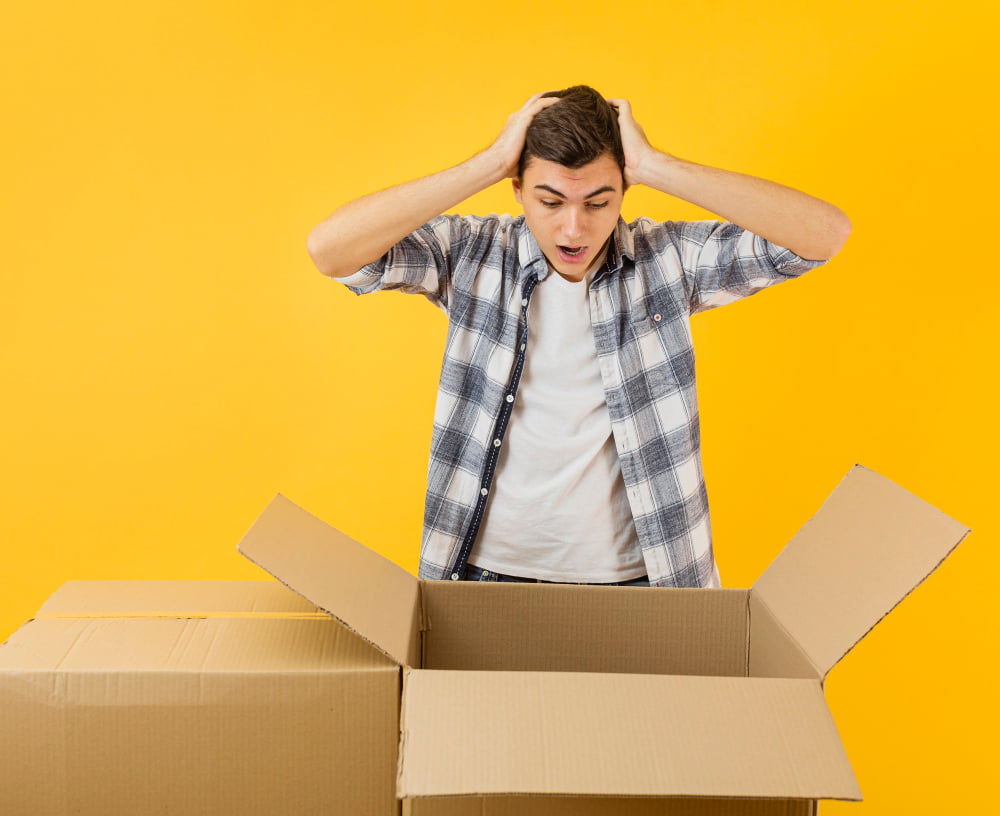
Begin by gathering items strewn around the home that are not in their correct places. Create a ‘misplace’ box to temporarily hold these items. To avoid disrupting the flow of decluttering, refrain from attempting to put each item back in its correct location immediately.
Once all rooms have been decluttered, begin to sort and return the items in your ‘misplace’ box to their appropriate locations. If an item doesn’t belong anywhere or isn’t useful anymore, consider donating, selling, or disposing of it. If an item lacks an allocated space, then you may need to rethink your organization system to accommodate it.
This process not only declutters but also helps identify storage gaps in your home.
Decluttering the Kitchen: Tips for Dishes, Cookware, and Small Appliances
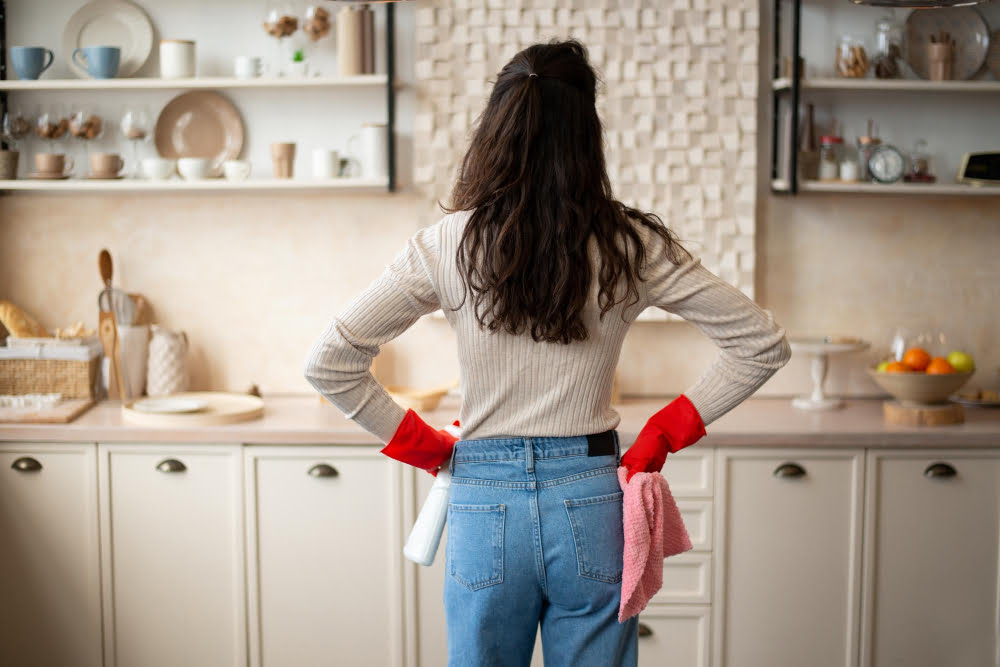
Begin with dishes and cutlery. Analyze each piece for its condition and frequency of use. Anything broken, worn out, or duplicated can be discarded. Effective decluttering entails keeping only necessary items.
Duplicates often contribute to clutter but are rarely used.
Consider your cookware next. Retain pots, pans, and baking trays that are in good condition and regularly used. Avoid the temptation to hoard seasonal items or “just in case” pieces. Limiting yourself to indispensable items simplifies both cooking and cleaning.
Lastly, navigate through your small appliances. Toasters, blenders, mixers, coffee makers, and rice cookers can occupy a significant amount of space. Analyze the frequency and functionality of each appliance. Dispose of broken appliances and donate those that work but are seldom used.
After sorting, clean your cabinets and drawers, then systematically place the retained items back. This exercise will offer you a neat, ordered kitchen that sparks inspiration for home-cooked meals. Remaining vigilant about not accumulating excessive items reduces the need for future extensive decluttering.
Tidying the Living Room
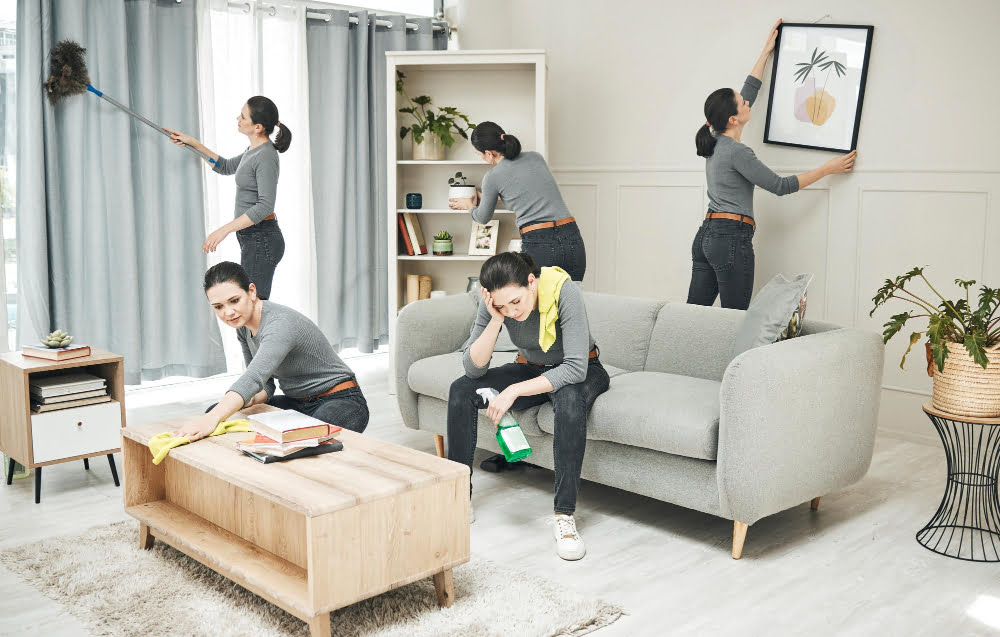
Start with removing any items that do not belong in the living room. Place these misplaced articles in the corresponding box for sorting later: keep, donate, trash, or sell.
Next, tackle your living room’s prime real estate – sofas, coffee tables, entertainment units, and bookshelves. Remove all items, clean the area, then consciously decide what goes back. Be firm and try not to overcrowd the spaces.
Books, DVD’s, and trinkets can be clutter magnets. Consider adopting a minimalist approach, keeping only what you love and use often. If you have children, consider implementing a basket system for toys. This facilitates easy cleanup and teaches them about organization from a young age.
Once you’re done, step back and admire your well-ordered living space, devoid of unnecessary clutter, where every item has a purpose and a place.
Organizing the Bedrooms and Clothing
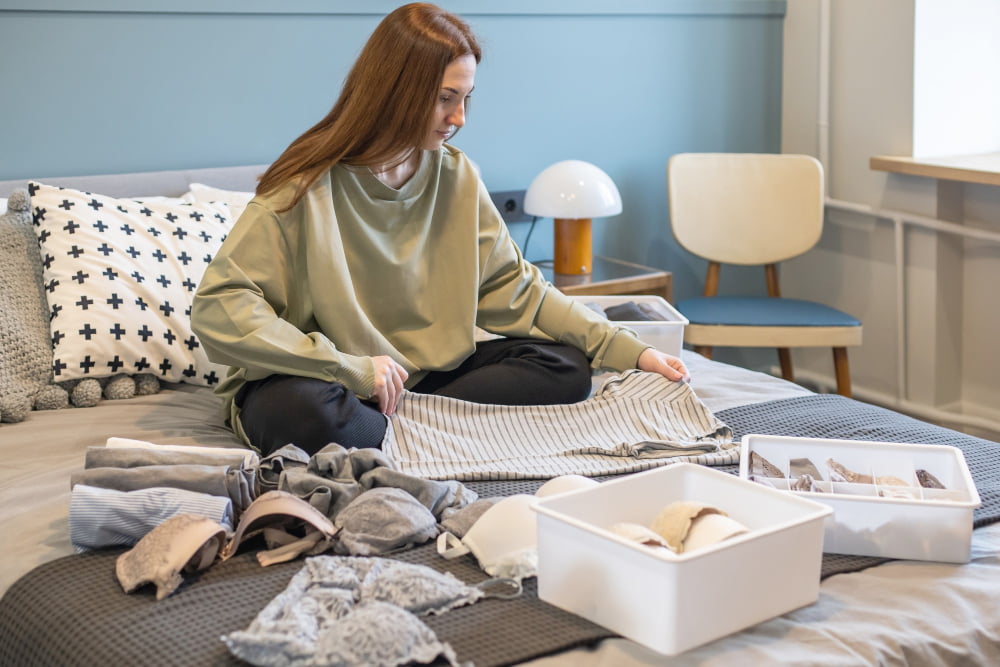
Approach clothing organization systematically for the best results. Start with emptying all drawers and closets onto your bed. This will allow for a thorough clean and review of each item.
Divide your clothing into categories – shirts, pants, underwear, jackets, etc.
Assess every piece of clothing individually. If it no longer fits, hasn’t been worn for over a year, is damaged or outdated, consider it for the donation or sell boxes.
For clothes that make the “keep” list, exploration of optimal storage techniques might be necessary. For instance, roll t-shirts instead of folding them to save space and easily identify the content of your drawers, or use slim hangers to maximize closet space.
Once clothes are sorted, shift attention to other items in the bedroom such as books, nightstand items, and knick-knacks.
Following the same principle, every item should have a designated spot, be it within bedside drawers, shelves, or in storage boxes under the bed.
With your clothing and bedroom items sorted and stowed correctly, your bedroom will emanate a sense of serenity, free from clutter and chaos.
Effective Bathroom Decluttering: Sorting Toiletries, Linens, and Supplies
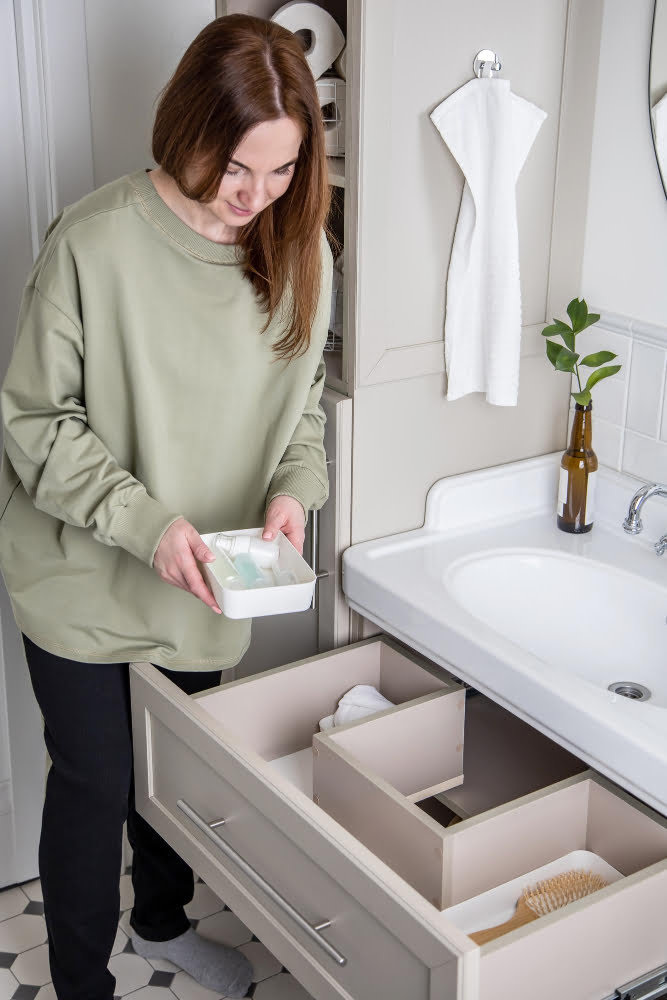
Start by emptying all the contents from cabinets, drawers, and shelves onto a clean surface. Next, review each item critically. Check for expired medications and cosmetics.
Even towels and washcloths wear out over time, so set aside faded or frayed ones for replacement.
Supply duplicates such as multiple razors, toothbrushes or unused hotel toiletries can be donated if unopened, or responsibly disposed of if not in use.
Once every item is in its respective category of Keep, Donate, Trash or Sell, it’s time to organize.
Group similar kept items together—bath products, skincare, haircare, dental hygiene—this method keeps like items accessible.
Transparent containers are useful to see what’s inside without needing to open them.
For storing towels and linens, consider rolling instead of folding—it saves space and makes them easy to grab.
Finally, when restocking, keep the items used daily at the front for easy accessibility and the seldom-used items at the back.
Cleaning Out the Closets and Decluttering Keepsakes
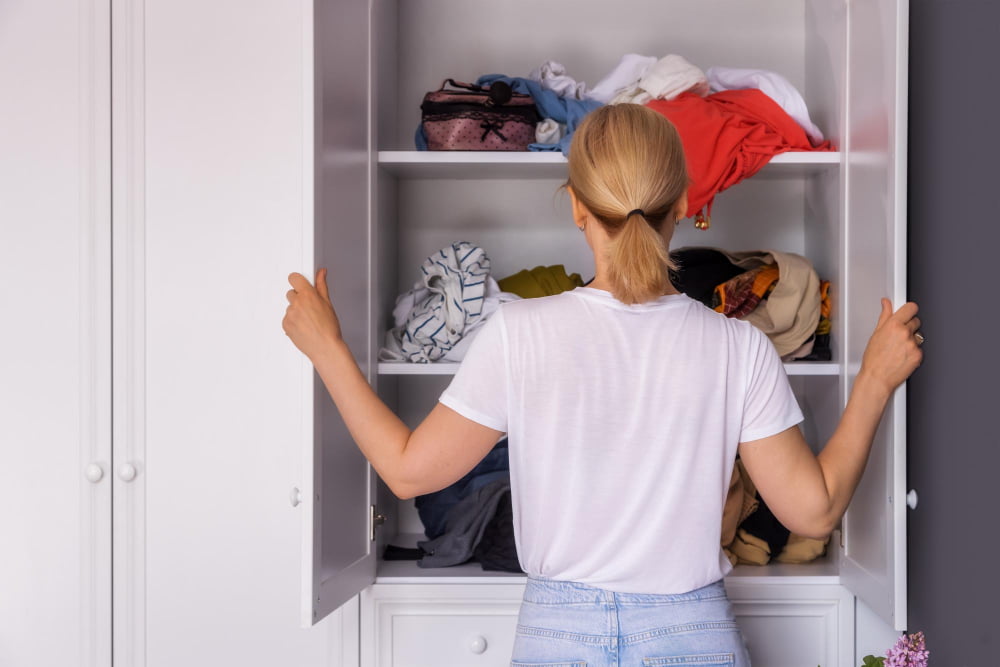
Start by emptying every closet completely to create a fresh canvas. Categorize the items into ‘frequent use’, ‘occasional use’, and ‘rarely or never used’.
Consider letting go of the latter, unless it holds significant sentimental value.
When addressing keepsakes, use a discerning eye. Not all reminders of the past are worth overcrowding your present.
Preserve cherished items that evoke strong positive memories. Create a dedicated ‘memory box’ or ‘keepsake drawer’ for these cherished mementos.
Ensure every item returned to the closet has a defined place. Keep ‘frequent use’ items at eye-level or within an easy reach.
This helps maintain the organization by ensuring each item naturally finds its way back to its designated spot.
Managing the Office or Study Room

Begin by sorting through piles of paperwork, which often make up the bulk of clutter in these spaces. Categorize into ‘necessary’, ‘recycle’, and ‘shred’.
Remember, old bills, tax returns from more than seven years ago, and outdated insurance policies can usually go straight into the shredding pile. For the remaining necessary documents, develop a filing system if you don’t have one already.
Next, examine the books and magazines. Keep only those that you refer to often or hold sentimental value.
Libraries, hospitals, and waiting rooms often appreciate donations of gently used books and magazines.
Office supplies deserve a thorough assessment; keep only those that are functional and needed. Consider donating excess items to local schools or community centers.
Finally, address the digital clutter. Clear out old emails, organize digital documents into folders, delete redundant or obsolete files, and ensure important files are backed up in a reliable storage solution.
Your digital workspace needs decluttering as much as your physical one.
Garage Decluttering Strategies

Start by creating different zones for tools, sports equipment, gardening supplies, and other categories that dominate your garage space. Larger items, like bicycles or ladders, can be hung from the ceiling or on the walls to maximize floor space. Items that are seldom used should be stored towards the back, while frequently used objects should be easily accessible.
Elect to use clear plastic bins for storing smaller items, this promotes visibility of your items and shields them from dust and pests. Always label your storage bins, to make locating items more straightforward in the future.
Lastly, consider discarding or donating outdated or broken tools, as well as those duplicate items that typically accumulate in a garage. Once your garage is decluttered, you will have a much more efficient and functional space.
Proper Disposal of Unwanted Items

Donating usable goods is both charitable and environmentally responsible. Local second-hand stores, charities, or shelters will usually accept clothing, household items, and books, among other things.
In terms of electronics, many municipalities offer e-waste recycling programs.
For items that can’t be donated or recycled, ensure you dispose of them in a manner that complies with local regulations. These often cover items such as batteries, paint, and other potentially hazardous household products.
Offloading items with monetary value is easier thanks to online marketplaces. Platforms such as eBay or Facebook Marketplace can help turn unwanted items into a little extra cash.
Finally, for items that are worn out beyond use, consider a professional curbside pickup or renting a dumpster, especially if dealing with bulky or heavy items. This helps avoid unnecessary trips and ensures your items are disposed of correctly.
Finding a Place for Kept Items and Creating Effective Storage Solutions
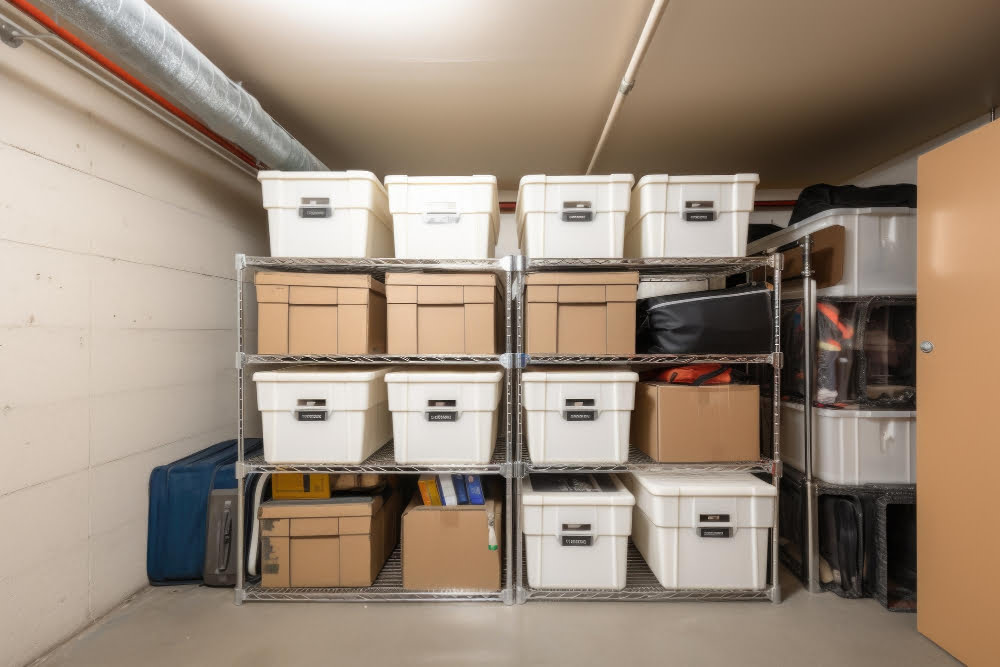
Identifying the right spots for the items you’ve decided to keep is key to maintaining a decluttered and organized home. Utilize your storage units efficiently; shelves, cabinets, drawers, and storage boxes can hold a considerable amount of items when utilized correctly.
The principle of ‘a place for everything and everything in its place’ should be your guide. Store items where they are used most often. Kitchen utensils should be near the stove or preparation area, office supplies close to your workspace, and toiletries in the bathroom.
Think creatively to save space. Use vertical space where possible, consider hanging items on walls, or use multi-purpose furniture with built-in storage. It’s also essential to label your storage boxes to easily identify what they contain without having to rummage through.
Avoid overfilling your storage areas to allow for easy access, and remember, organizing is a dynamic process.
Regularly assess and adjust your systems as your needs change. By being adaptable and making continuous small adjustments, you can maintain an organized home effortlessly.
Strategies to Stay Decluttered: Maintaining a Clutter-Free Home

To maintain a clutter-free home, adopting a strategy becomes indispensable. The ‘One In, One Out’ rule is highly effective; for every new item brought into the house, another has to leave. This works well with most items like clothes, books, and toys.
Adopting a regular decluttering schedule is also crucial. Set aside time each week or month, depending on your lifestyle, to revisit areas that get cluttered over time. Remember, decluttering is not a one-time event, but a process.
Decluttering digital spaces – including email inboxes and electronic files – is just as important. Regularly archive and delete unnecessary electronic information to keep your digital space tidy.
Lastly, involve all household members in maintaining the clutter-free state. Share responsibilities and help everyone understand the importance of this. Keeping a clutter-free environment is a team effort.
Benefits of a Decluttered House

Experiencing a cleaner, more spacious environment is merely the tip of the iceberg when it comes to advantages. Improved focus and productivity emerge from the reduction of distractive elements. Often, an organized home catalyzes enhanced mental clarity, amplifying your ability to process thoughts and execute tasks.
A decluttered space minimizes time spent searching for misplaced items, making daily routines smoother. There’s also a sense of positive accomplishment from restoring order to your environment, which can boost mood and overall well-being.
Furthermore, decluttering provides an opportunity to identify unwanted, unused items that could be donated or sold — aligning with ecological principles while potentially resulting in extra cash. Finally, a decluttered and organized house is easier to clean and maintain, saving both time and effort in the long run.
Recap: Summarizing One-Day Decluttering

Evidently, undertaking a one-day decluttering project involves strategic planning and swift action.
Kick off by establishing the objective, securing the needed supplies, and sticking to the 4-Box challenge.
The success lies in the systematic tackle, moving category by category rather than room by room.
Prioritize frequently used spaces, be they bedrooms, living areas, or personal offices.
Then proceed to the less-frequented zones such as the garage or storage closets.
When finished, reorganize retained items and dispose of the rest responsibly.
Finally, adopting certain strategies to maintain the newfound, uncluttered state is equally essential.
Thus, the clutter-free existence not only lies within reach in a single day, but also stands sustainable in the long run if approached diligently.
FAQ
What is the 20 rule decluttering?
The 20/20 rule of decluttering advises discarding an item if it can be replaced for under $20 and within 20 minutes.
How do you aggressively declutter your house?
To aggressively declutter your house, initiate with smaller areas such as a drawer or cabinet, progressing one by one, thus making visible improvements that motivate you to continue the process until the entire house is orderly.
What are the best strategies for decluttering a small space swiftly?
Best strategies for swiftly decluttering a small space include consistently ensuring everything has a designated place, regularly purging items that aren’t used or loved, maximizing hidden storage solutions, and utilizing vertical spaces to avoid floor clutter.
How can one incorporate minimalism into decluttering efforts for a more sustainable lifestyle?
Minimalism in decluttering can be incorporated by intentionally reducing the amount of possessions owned, keeping only items that serve a purpose or spark joy, and refraining from excessive consumption, which contributes significantly to a sustainable lifestyle.
What can be the immediate and long-term benefits of undertaking a one-day declutter challenge?
An immediate benefit of a one-day declutter challenge is the attainment of a more organized and efficient living or work space, while the long-term benefits include lower stress levels, improved mental clarity and overall enhanced well-being.
Related Stories
- How Long Does It Take to Declutter a House?
- Declutter Before Moving: Step-by-Step Tips to Simplify Your Move
- Tidying Up Techniques: Top Expert Advice for a Neat and Orderly Home
- How to Declutter: A Comprehensive Guide for a Clutter-Free Home
- Decluttering Checklist: Essential Steps to Streamline Your Space